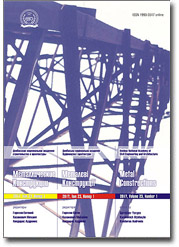Changes in the Properties of High-Strength Sheet Steel in Subsequent Process Heatings
Abstract: The paper presents the results of a study of the effect of controlled rolling and subsequent technological heating to various temperatures, including during welding, and the duration of exposure at the same time on the processes of structure formation in high-strength steel sheets EN36 and X70. It was found that when a thick sheet is redone into products, it is necessary to minimize temperature and time parameters in order to prevent softening processes. Welding, as one of the sources of technological heating, leads to a change in the structure in the heat-affected zone and uneven distribution of hardness over the cross section of welded joints, which reduces the equal strength of the structure as a whole. Short-term heating (about 15 minutes) even to a temperature above Ac1 (760 °C) and cooling in air in the weld zone does not lead to significant changes in structure and hardness, but the degree of homogeneity of the sheets being welded increases.
Keywords: sheet steel, controlled rolling, strength, structure formation, process heating, temperature and duration, softening.
Pages: 25-33.
For citation:
For citation: Alimov, V. I.; Shtykhno, A. P.; Kolchina, Yu. S. Changes in the Properties of High-Strength Sheet Steel in Subsequent Process Heatings. – Text : electronic. – In: <em>Metal Constructions</em>. – 2019. – Vol. 25, N 1. – Р. 25-33. – URL: https://donnasa.ru/publish_house/journals/mk/2019-1/03_alimov_shtykhno_kolchina.pdf (date of access: 07.03.2025). – ISSN 1993-3517.

Vol. 25, N 1 (2019)
Journal: Metal Constructions
Publish house: Donbas National Academy of Civil Engineering and Architecture
Journal: Metal Constructions
Publish house: Donbas National Academy of Civil Engineering and Architecture
